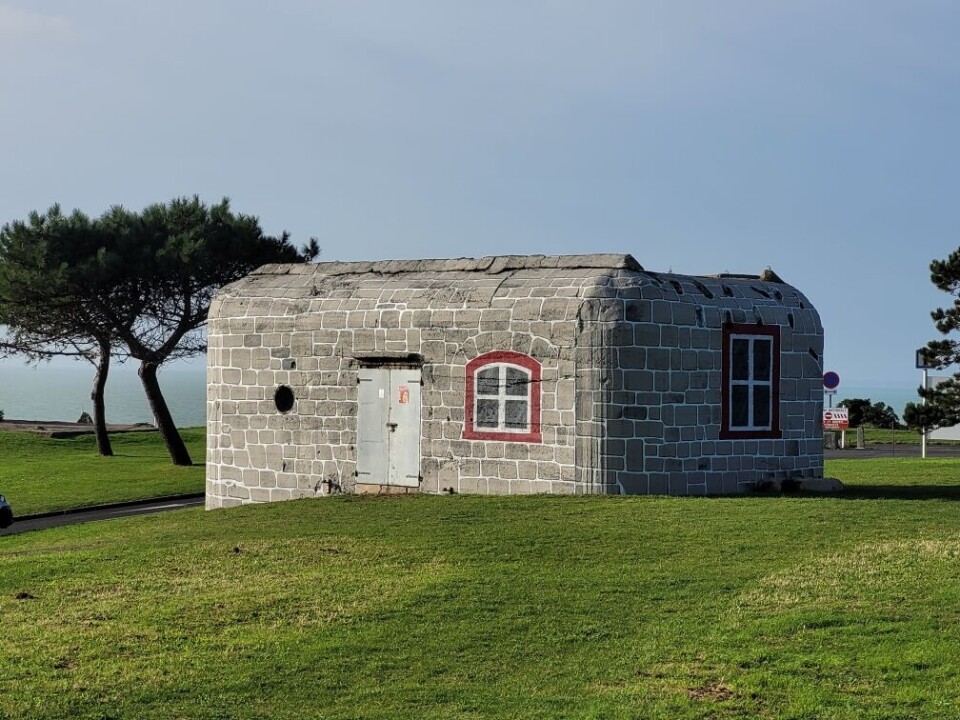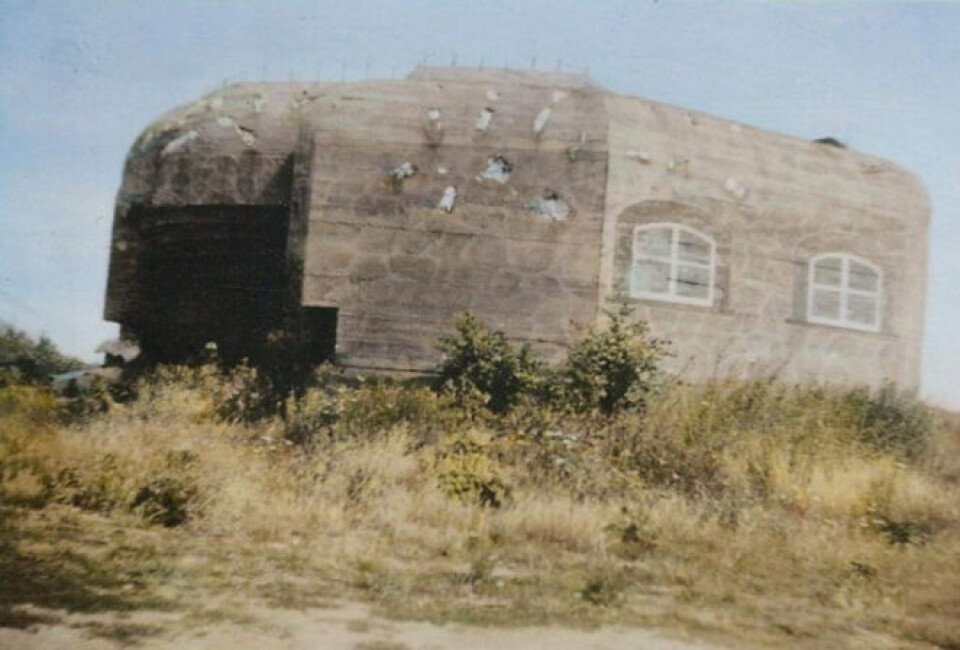-
Millions of Perrier bottles blocked in south of France over bacteria concerns
Anomalies found at plant in Gard
-
Pink number plates officially arrive in France from 2026
The new system is designed to help curb fraud and make checks easier for police
-
British teen resident in France had to register in EES on reentry
13-year-old without a DCEM young person’s travel document was told he would be subject to the 90/180 days rule
Row after association makes Normandy war bunker look like a house
The structure was originally painted this way to disguise it from the Allies

A bunker dating from World War Two has been painted to look like a house, restoring its original aspect that was intended to disguise it from the Allies.
The bunker in Granville (Manche) organised by the association Un été 44 Normandy, has upset local officials, who say that it is not what they had anticipated on agreeing to the project.
“The result does not match what we agreed on based on the historical documents,” Granville councillor Alexis Cosson-James told newspaper La Presse de la Manche.
“We had envisioned a restoration project rather than an artistic creation.”
The association responsible told The Connexion they based the paint on photographs taken from the 1950s and consulted with Architectes des bâtiments de France, the body that oversees historic buildings, before beginning the work in October.
“Almost all of the original paint had completely disappeared, except around one of the windows,” association secretary Merwan Le Saint told The Connexion.
“The mairie isn’t happy because the remaining original paint isn’t visible anymore.”
During the Second World War, the Nazi occupiers of Normandy forced locals to paint the bunker for them, which the association hopes their repainting will help to commemorate.
“The father of one of our donors was one of the people forced by the Nazis to paint the bunker,” said association treasurer Stéphane Souvenet.
“We felt an obligation to honour their memory.”

Around 12,000 bunkers were built along the coast by the Nazis, from Norway to the French Basque country, between 1942 and 1944.
In France alone, some 150,000 workers were taken on to build them, most enlisted under service du travail obligatoire (STO) rules, when thousands of French workers were forced to work for the war effort.
Read more: Painful and important history of France’s WW2 bunkers
In response to criticism from the mairie, some of the new paint has been removed, revealing the bunker’s concrete aspect.
However, the association hopes that the rest of the paint can stay, at least until the 80th anniversary of D-Day next summer.
“At the moment it’s a battle,” said Mr Le Saint. “The mairie doesn’t want to hear about keeping the paint. I’ve been in negotiations with them for days.”
“But the reaction from visitors has been positive. People are amazed that the bunker ever looked like this.”
Related articles
French man finds bracelet of American WWII soldier in a field
Last World War Two Oradour massacre survivor publishes book account
American returns 68 years on to French town that helped him after WWII
























